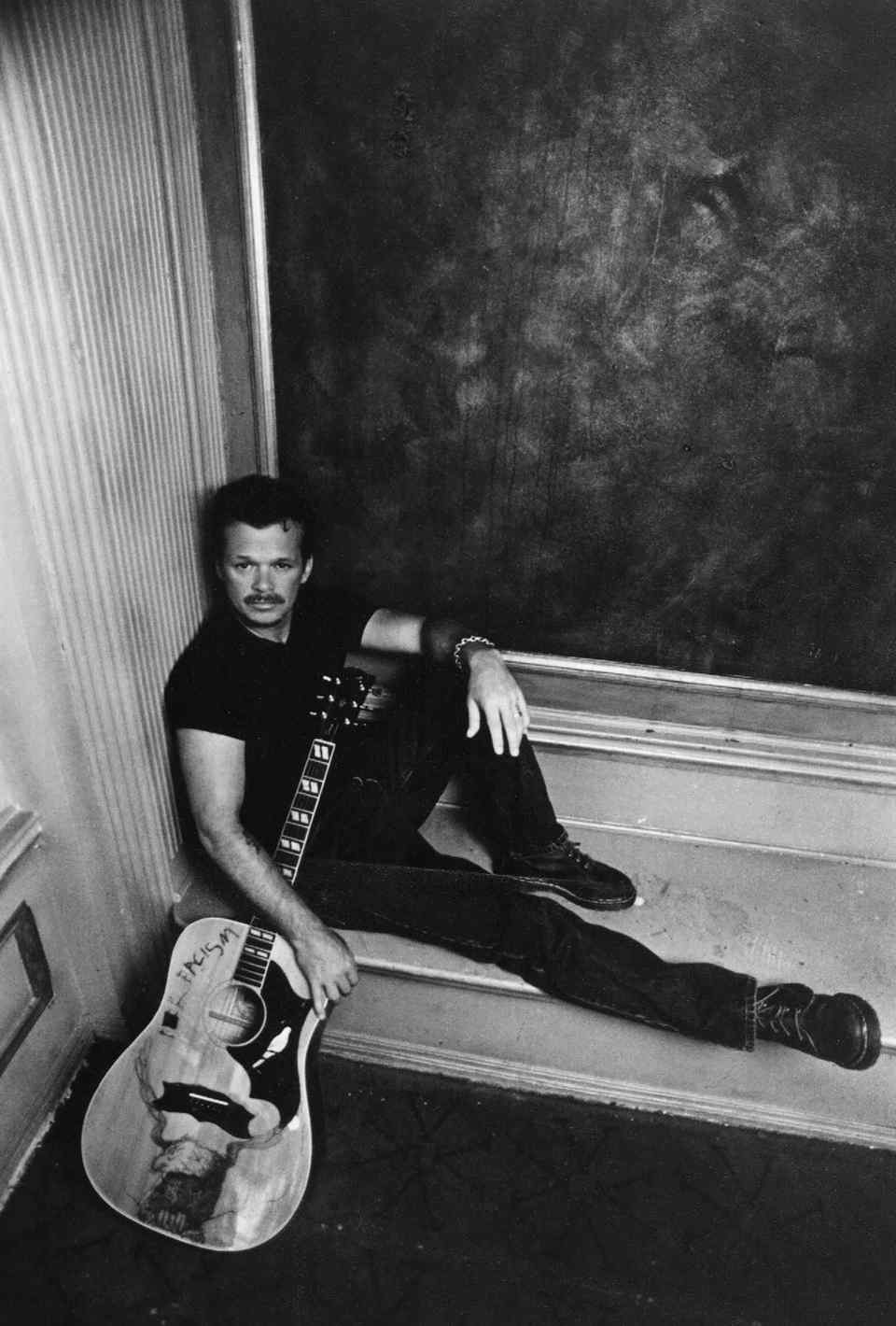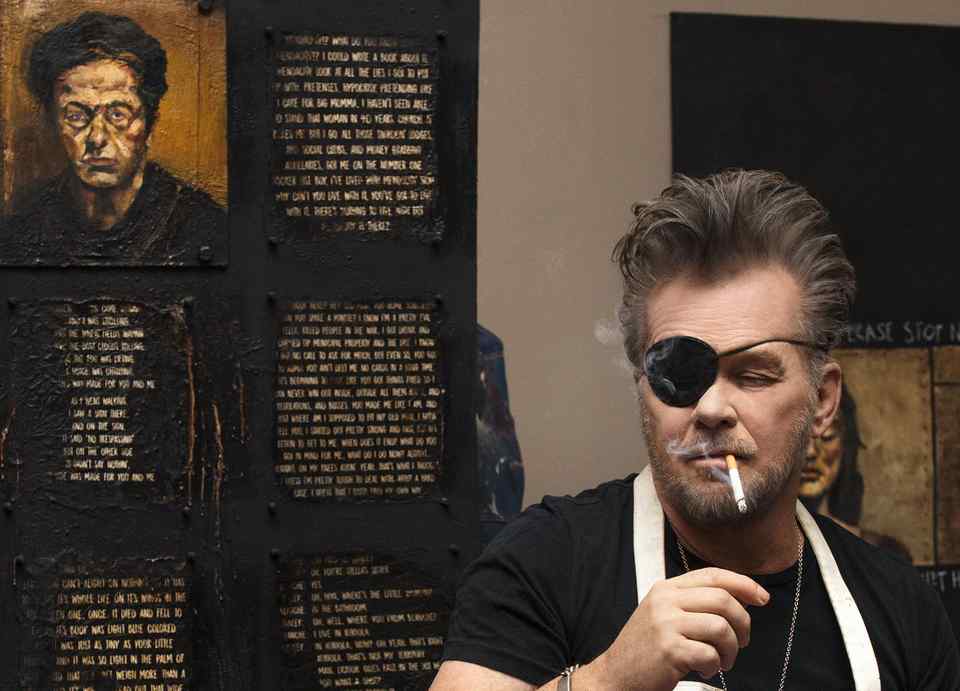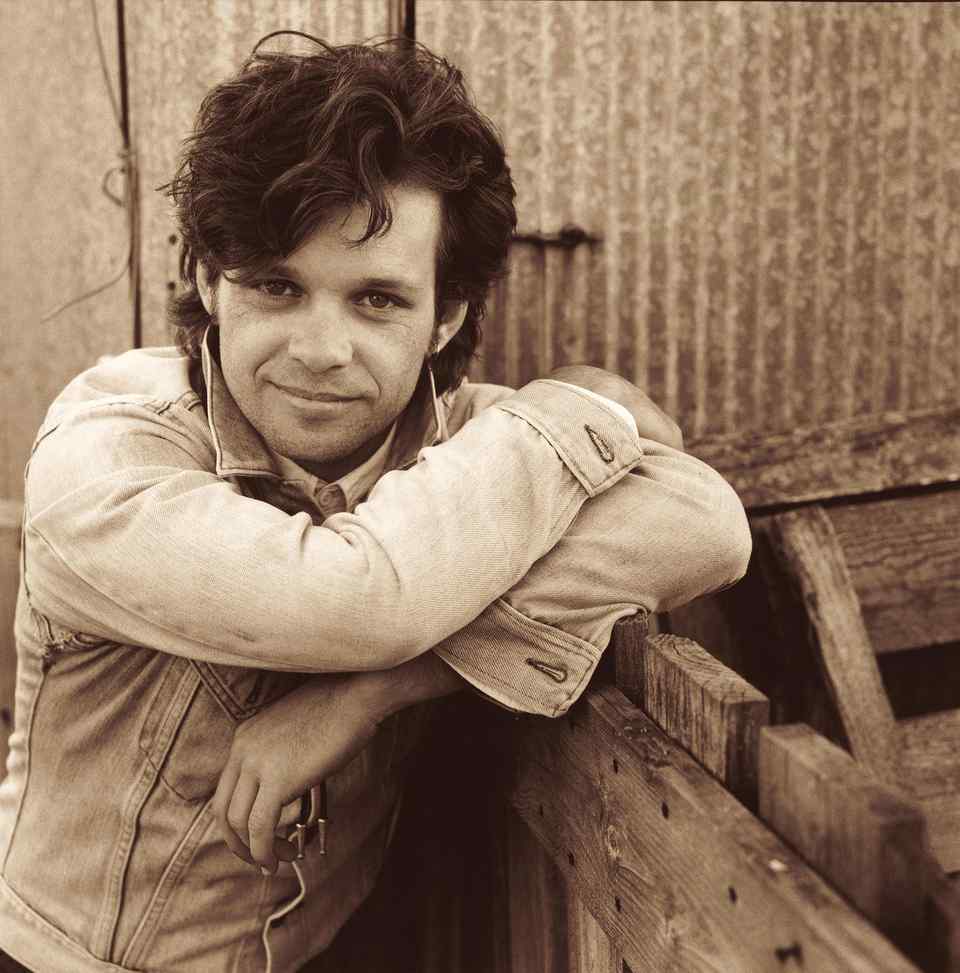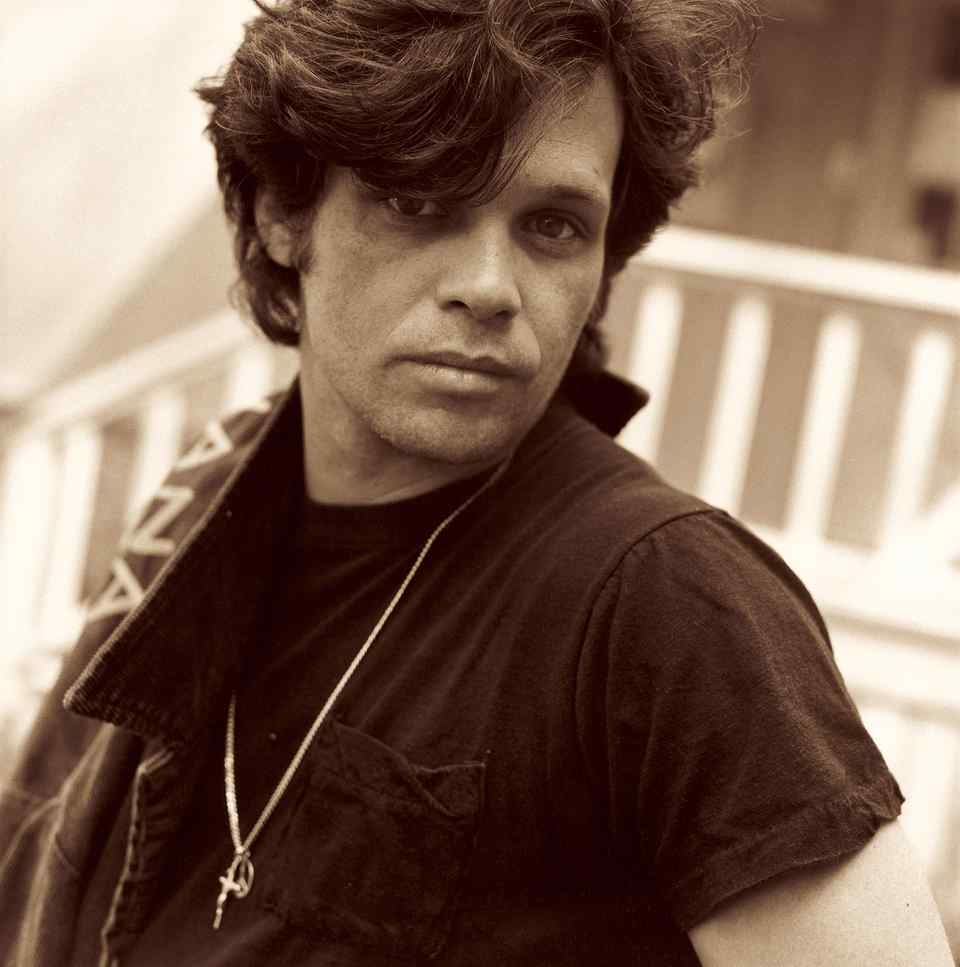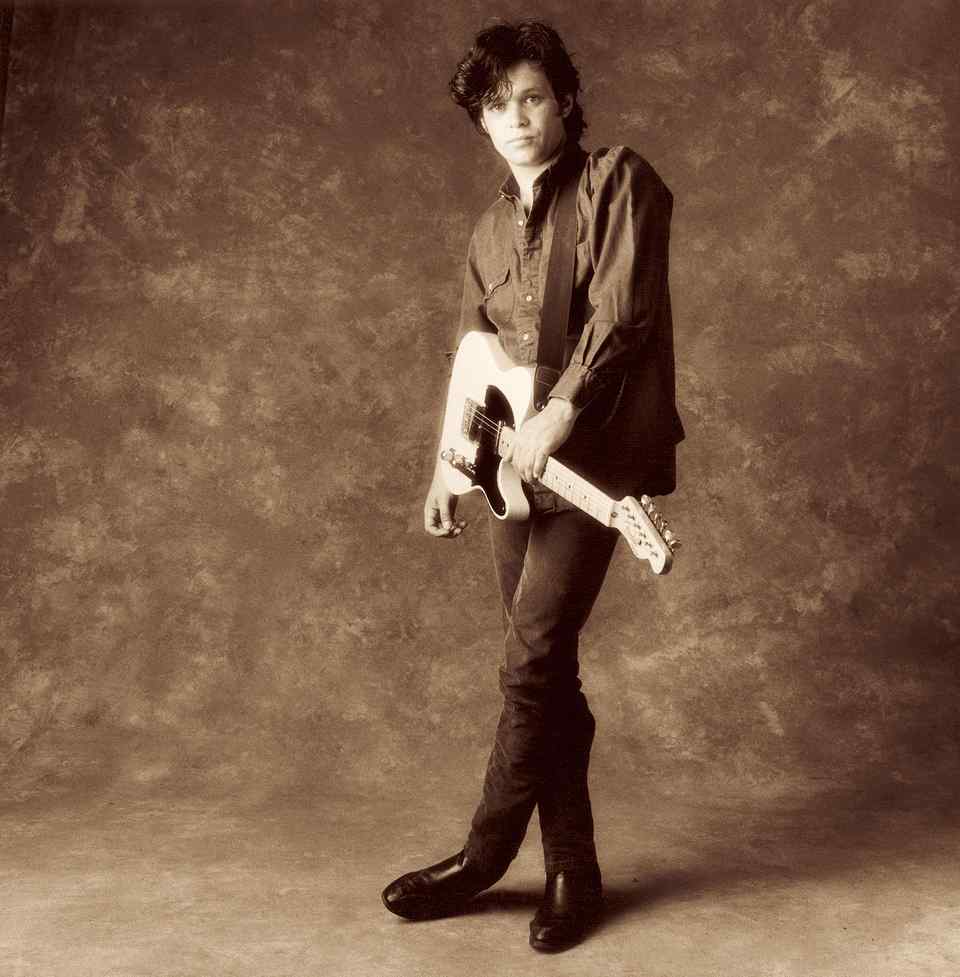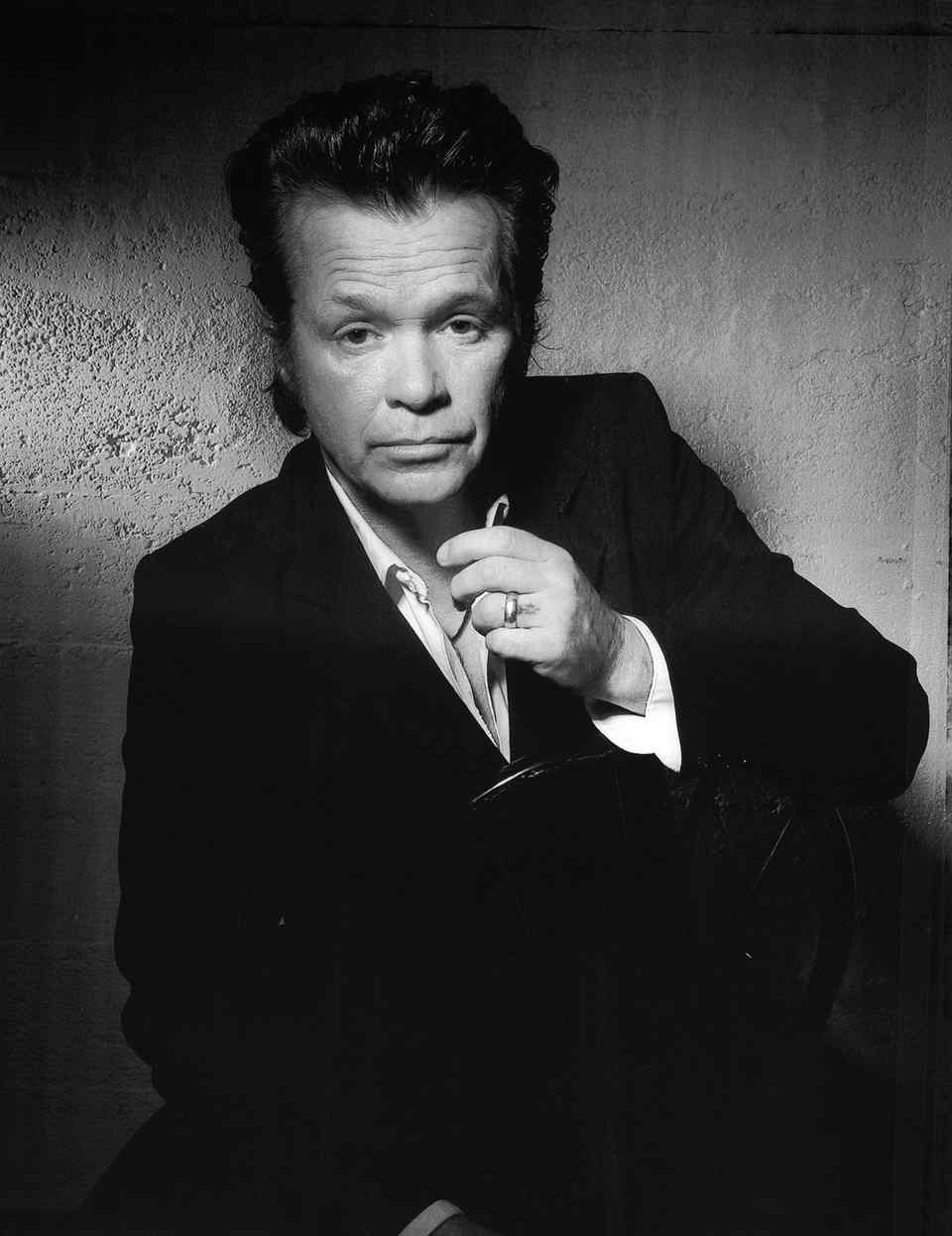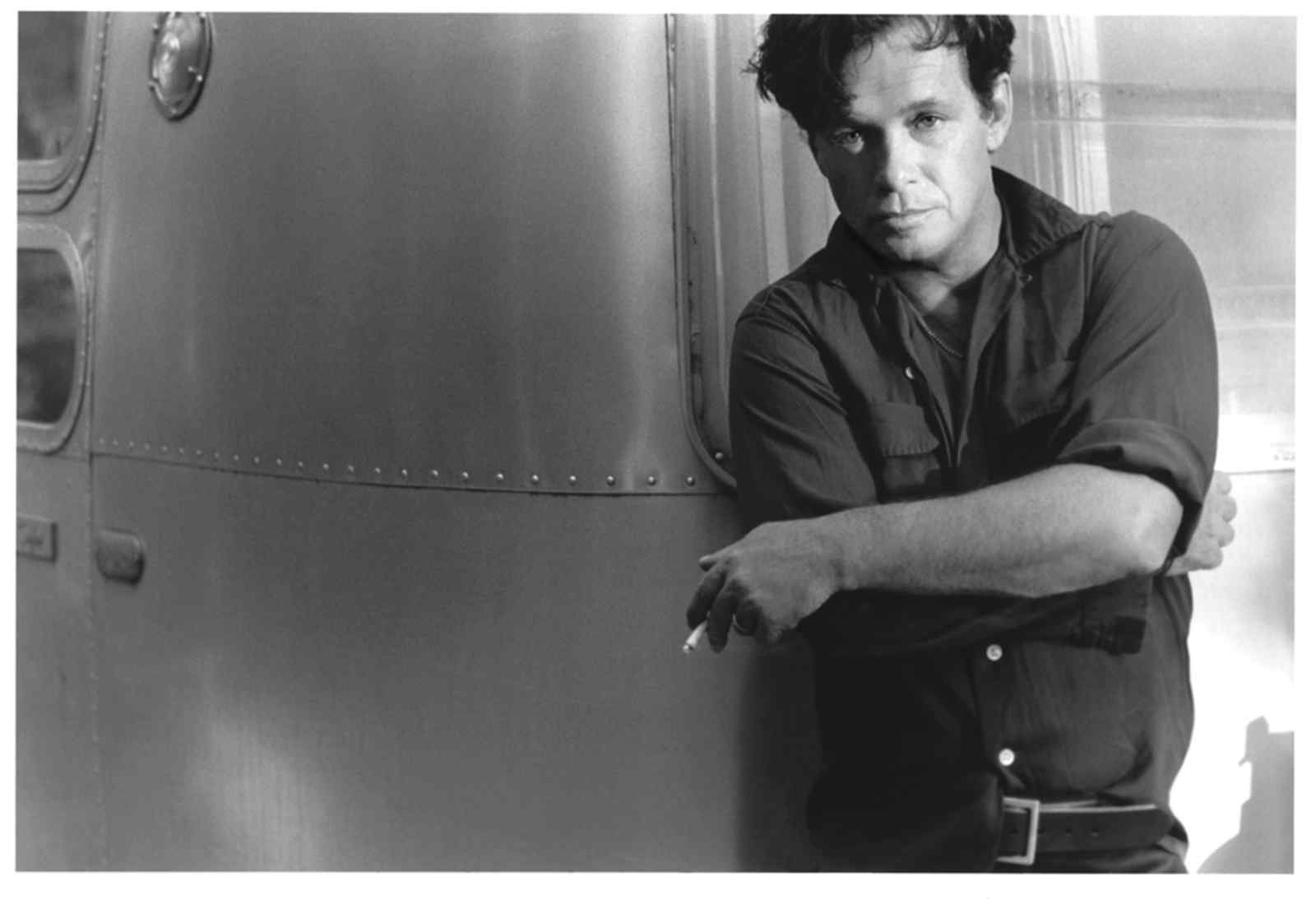GQ: John Mellencamp Is Channeling John Huston and Louis Armstrong Now
GQ By Al Shipley
A year or two back, John Mellencamp walked into his Indiana studio one morning, and his engineer, the same one he’s worked with since the ‘80s, asked him, “You wanna hear something fuckin’ wild?” The engineer and one of his band members played back an isolated vocal from one of Mellencamp’s new songs. Then they played something else that sounded similar, and asked him what it was. “And I go, ‘Me?’ They go, ‘No, it’s Louis Armstrong.”
There’s always been a slight rasp in John Mellencamp’s singing. But as he was recording his new album, Strictly a One-Eyed Jack, he and his engineer noticed how much more leathery that familiar voice had become. “He takes care of my voice on the records. And he’d comment on it, ‘How much of this growl do you want on the track?’ And I would always just smile and go, ‘Well, the cigarette smoking’s starting to pay off I guess.’”
Strictly a One-Eyed Jack is Mellencamp’s 25th studio album, starkly minimalist and full of downbeat songs like “I Am a Man That Worries” that make excellent use of the newfound gravitas in his voice. It’s gotten glowing notices from critics, but it’s almost certainly the first time Tom Waits has been name-dropped in many of Mellencamp’s reviews. It’s a far cry from the bright, anthemic songs like “Hurts So Good” that made him one of the biggest stars of the ‘80s, but that’s clearly fine with him. “I always thought as a young man that my voice was too high,” Mellencamp shrugs, over the phone from his home in Indiana a few days after the album’s release. His old friend Bruce Springsteen flew out to Indiana to work on three songs on the album, including the single “Wasted Days.” And though Springsteen’s voice has also been weathered by time, he sounds smoother and softer in comparison to Mellencamp’s craggy tone.
Mellencamp, who turned 70 last October, also writes differently than he used to. “When I was a kid, I would try to control the songs, and y’know, they were labored, they were crafted. In the last 15, 20 years, I stopped crafting songs. I just let the songs roll out however they want to present themselves,” he says, citing a favorite filmmaker to explain the character-driven nature of his latest set. “As wacky as it sounds, I try to name the person who’s sending me these songs and I’m pretty sure it’s John Huston on this record.”
John Mellencamp has played a character before, and he wasn’t always happy about it. “I really, for a long time, hated the fact that I was arm-twisted to become Johnny Cougar,” he says, referencing the stage name he began recording under in the mid-‘70s. Over the course of his first 11 albums, as he gained more success and agency over his career, the singer slowly changed his name back, from Johnny Cougar to John Cougar, to John Cougar Mellencamp, and then finally to simply John Mellencamp in 1991. The silly name came from his first manager Tony DeFries, the British impresario who helped engineer David Bowie’s rise to fame. “His whole explanation to me was that Mellencamp was first of all a Although Mellencamp would eventually become synonymous with the concept of “heartland rock,” thanks to songs about small town life like “Pink Houses,” glam rock and proto punk were in the air when his career got started. “I was a singer in a bar band, and we were doing Iggy & The Stooges cover songs,” he says; another early band was named Trash, after the New York Dolls song. Some of his earliest recordings, now featured as bonus tracks on his 1976 debut Chestnut Street Incident, were covers of Bowie’s “The Man Who Sold the World” and the Stooges’ “I Need Somebody.” But Mellencamp never really tried for the glam rock look, and it was his Midwestern roots that got his foot in the door when he took his demo to the New York offices of DeFries’s company MainMan. The receptionist was also from Indiana, and made sure DeFries gave him a chance. “There was a whole bunch of fuckin’ guys droppin’ off tapes, they all looked like David Bowie, all had that same hair, but I didn’t look that way. But she made sure he listened to it.”
Mellencamp’s early years in the music industry were full of trial and error. The second album he recorded was shelved, and the third was only released in the U.K. and Australia. When “I Need A Lover” became a surprise hit in Australia, it was included on his next album and finally given an American release, giving him a foothold on the charts. But even when blockbuster success came with 1982’s American Fool, money was slow to follow. “In 1982, I had the number one album in America and the number one single and the number two single. I didn’t have any fuckin’ money, I didn’t have a dime in my pocket.” By then he’d split from Tony DeFries, but his former manager released The Kid Inside, the album that had been recorded and shelved in 1977, to capitalize on his newfound fame.
The trials and tribulations that got Mellencamp where he is have left him unsentimental about his catalog. “I never listen to my old records, I’m not nostalgic at all,” he says, although he’ll gamely answer questions about the quirks of your favorite songs. The long jam before the first verse of “I Need A Lover”? “The reason that intro was so long is because we had just discovered that you could change keys in the middle of the song. It’s like ‘Oh listen, if you go to here, we can play the same fuckin’ part but in a different key and it kinda uplifts the song.” The second verse of 1987’s “Cherry Bomb,” where Mellencamp and two other singers take turns singing lead? “I can answer that really simply for you: Sly and the Family Stone. He had all those hit records when I was in junior high, and I love the fact that all the sudden there’s a female voice, then a male voice.”
Despite his reputation as a prickly guy who’s ambivalent about the multi-platinum sales and his 2008 induction into the Rock and Roll Hall of Fame, Mellencamp has become more reflective and appreciative about his long career, and his friendships with peers like Springsteen. “I was talking to Bruce and he goes, ‘Yeah, when I made my first record, they were calling me the new Dylan. Bob Dylan was only 32 years old and they were already looking for a new Bob Dylan.’ Who would’ve thought that Dylan would be 80 and still making the records he’s making? Nobody,” he chuckles. “So the idea that I would be 70 years old probably making the best record I ever made in my life is just laughable.”
And even though he’ll never go back to being Johnny Cougar, Mellencamp admits now that the name helped make him the man he is today, comparing the situation to the Johnny Cash song “A Boy Named Sue.” “I look back on it as an older gentleman. And I go, y’know, if I hadn’t had that name and that albatross around my neck, I probably wouldn’t have tried so hard.”
A year or two back, John Mellencamp walked into his Indiana studio one morning, and his engineer, the same one he’s worked with since the ‘80s, asked him, “You wanna hear something fuckin’ wild?” The engineer and one of his band members played back an isolated vocal from one of Mellencamp’s new songs. Then they played something else that sounded similar, and asked him what it was. “And I go, ‘Me?’ They go, ‘No, it’s Louis Armstrong.”
There’s always been a slight rasp in John Mellencamp’s singing. But as he was recording his new album, Strictly a One-Eyed Jack, he and his engineer noticed how much more leathery that familiar voice had become. “He takes care of my voice on the records. And he’d comment on it, ‘How much of this growl do you want on the track?’ And I would always just smile and go, ‘Well, the cigarette smoking’s starting to pay off I guess.’”
Strictly a One-Eyed Jack is Mellencamp’s 25th studio album, starkly minimalist and full of downbeat songs like “I Am a Man That Worries” that make excellent use of the newfound gravitas in his voice. It’s gotten glowing notices from critics, but it’s almost certainly the first time Tom Waits has been name-dropped in many of Mellencamp’s reviews. It’s a far cry from the bright, anthemic songs like “Hurts So Good” that made him one of the biggest stars of the ‘80s, but that’s clearly fine with him. “I always thought as a young man that my voice was too high,” Mellencamp shrugs, over the phone from his home in Indiana a few days after the album’s release. His old friend Bruce Springsteen flew out to Indiana to work on three songs on the album, including the single “Wasted Days.” And though Springsteen’s voice has also been weathered by time, he sounds smoother and softer in comparison to Mellencamp’s craggy tone.
Mellencamp, who turned 70 last October, also writes differently than he used to. “When I was a kid, I would try to control the songs, and y’know, they were labored, they were crafted. In the last 15, 20 years, I stopped crafting songs. I just let the songs roll out however they want to present themselves,” he says, citing a favorite filmmaker to explain the character-driven nature of his latest set. “As wacky as it sounds, I try to name the person who’s sending me these songs and I’m pretty sure it’s John Huston on this record.”
John Mellencamp has played a character before, and he wasn’t always happy about it. “I really, for a long time, hated the fact that I was arm-twisted to become Johnny Cougar,” he says, referencing the stage name he began recording under in the mid-‘70s. Over the course of his first 11 albums, as he gained more success and agency over his career, the singer slowly changed his name back, from Johnny Cougar to John Cougar, to John Cougar Mellencamp, and then finally to simply John Mellencamp in 1991. The silly name came from his first manager Tony DeFries, the British impresario who helped engineer David Bowie’s rise to fame. “His whole explanation to me was that Mellencamp was first of all a Although Mellencamp would eventually become synonymous with the concept of “heartland rock,” thanks to songs about small town life like “Pink Houses,” glam rock and proto punk were in the air when his career got started. “I was a singer in a bar band, and we were doing Iggy & The Stooges cover songs,” he says; another early band was named Trash, after the New York Dolls song. Some of his earliest recordings, now featured as bonus tracks on his 1976 debut Chestnut Street Incident, were covers of Bowie’s “The Man Who Sold the World” and the Stooges’ “I Need Somebody.” But Mellencamp never really tried for the glam rock look, and it was his Midwestern roots that got his foot in the door when he took his demo to the New York offices of DeFries’s company MainMan. The receptionist was also from Indiana, and made sure DeFries gave him a chance. “There was a whole bunch of fuckin’ guys droppin’ off tapes, they all looked like David Bowie, all had that same hair, but I didn’t look that way. But she made sure he listened to it.”
Mellencamp’s early years in the music industry were full of trial and error. The second album he recorded was shelved, and the third was only released in the U.K. and Australia. When “I Need A Lover” became a surprise hit in Australia, it was included on his next album and finally given an American release, giving him a foothold on the charts. But even when blockbuster success came with 1982’s American Fool, money was slow to follow. “In 1982, I had the number one album in America and the number one single and the number two single. I didn’t have any fuckin’ money, I didn’t have a dime in my pocket.” By then he’d split from Tony DeFries, but his former manager released The Kid Inside, the album that had been recorded and shelved in 1977, to capitalize on his newfound fame.
The trials and tribulations that got Mellencamp where he is have left him unsentimental about his catalog. “I never listen to my old records, I’m not nostalgic at all,” he says, although he’ll gamely answer questions about the quirks of your favorite songs. The long jam before the first verse of “I Need A Lover”? “The reason that intro was so long is because we had just discovered that you could change keys in the middle of the song. It’s like ‘Oh listen, if you go to here, we can play the same fuckin’ part but in a different key and it kinda uplifts the song.” The second verse of 1987’s “Cherry Bomb,” where Mellencamp and two other singers take turns singing lead? “I can answer that really simply for you: Sly and the Family Stone. He had all those hit records when I was in junior high, and I love the fact that all the sudden there’s a female voice, then a male voice.”
Despite his reputation as a prickly guy who’s ambivalent about the multi-platinum sales and his 2008 induction into the Rock and Roll Hall of Fame, Mellencamp has become more reflective and appreciative about his long career, and his friendships with peers like Springsteen. “I was talking to Bruce and he goes, ‘Yeah, when I made my first record, they were calling me the new Dylan. Bob Dylan was only 32 years old and they were already looking for a new Bob Dylan.’ Who would’ve thought that Dylan would be 80 and still making the records he’s making? Nobody,” he chuckles. “So the idea that I would be 70 years old probably making the best record I ever made in my life is just laughable.”
And even though he’ll never go back to being Johnny Cougar, Mellencamp admits now that the name helped make him the man he is today, comparing the situation to the Johnny Cash song “A Boy Named Sue.” “I look back on it as an older gentleman. And I go, y’know, if I hadn’t had that name and that albatross around my neck, I probably wouldn’t have tried so hard.”
